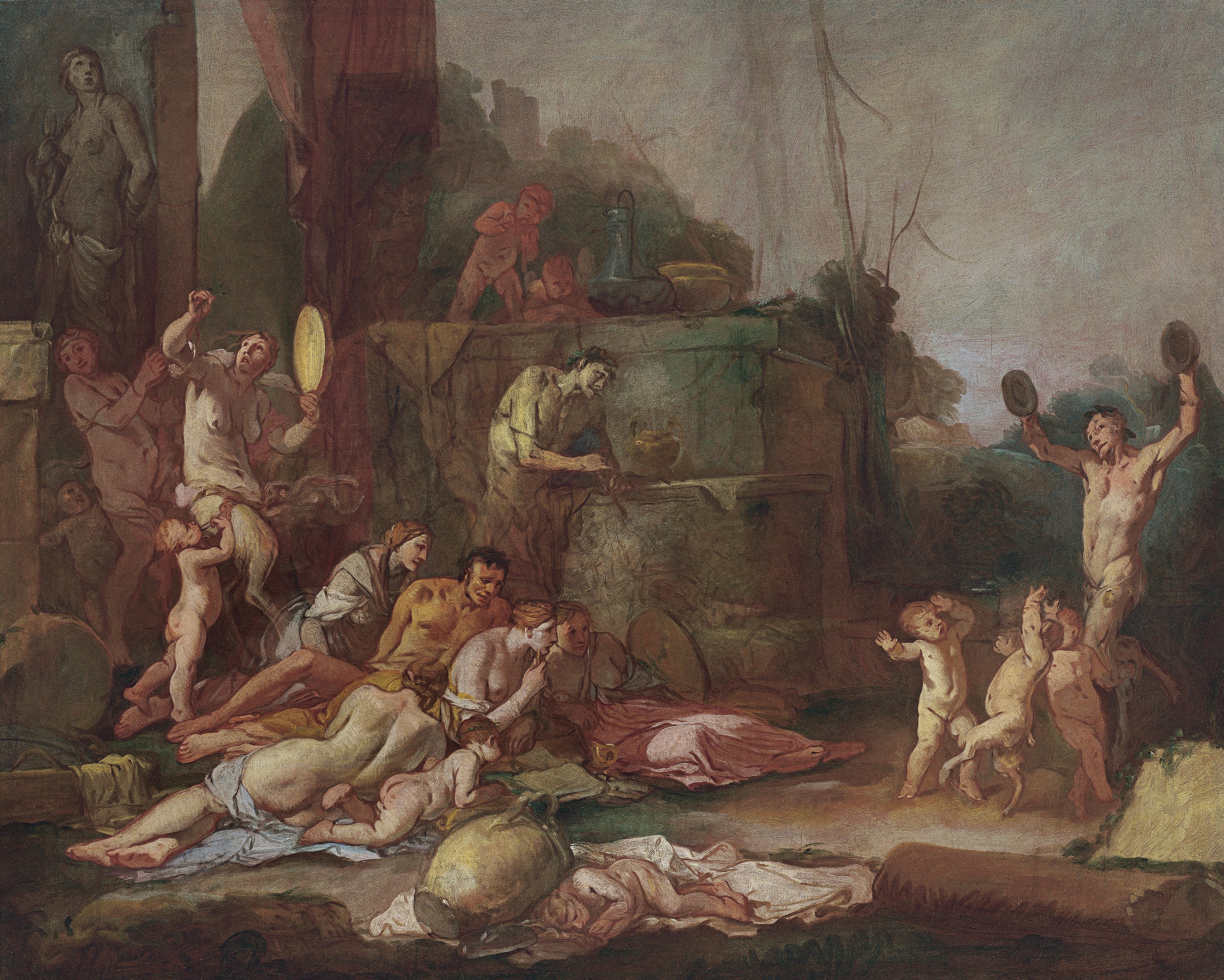Bacchanal
Giulio Carpioni began his training in Padovanino’s workshop where he became acquainted with the work of Titian. Around 1631 he travelled with his master to Bergamo, gaining a knowledge of the realist style of Lombard painting. In 1638 Carpioni moved to Vicenza, remaining there for the rest of his career apart from a period of absence from 1669 to 1673, during which he is documented in Verona in the last year of that period. Carpioni was interested in the work of Francesco Maffei, particularly his loose, brilliant brushstroke. When Maffei moved to Padua in 1657, Carpioni became the most important artist in the Vicenza region. He began to receive a greater number of commissions, which he partly entrusted to his studio. The artist is known for his religious works, including one of his first known paintings, The Martyrdom of Saint Catherine, painted for the church of Santa Catarina in Vicenza. Mythological paintings constitute the second most important area within his oeuvre.
It would be in his mythological works, devoted to scenes of the gods and semi-divinities of Antiquity, that Carpioni reveals the classical influence of Titian and the contemporary one of Nicolas Poussin and Salvator Rosa, and works of this type can be considered his most original and distinctive creations. These compositions were praised by Pellegrino Antonio Orlandi in the early 18th century in his Abecedario pittorico, published in Bologna in 1704. Bacchanals were celebrations in honour of Bacchus, god of wine. Among those taking part were his followers or bacchantes, fauns and satyrs. These orgiastic celebrations were extremely wild and were accompanied by wine and music played on tambourines by the bacchantes (an image to be found on Greek ceramics), while the satyrs played flageolets. The latter, along with the bacchantes, made up Bacchus’ retinue. These idle, lascivious creatures, half man and half goat, were the spirits of the forests and mountains, who occupied their time chasing nymphs through the trees.
In the present bacchanal, set outdoors among ruins, Carpioni depicts Bacchus lying among a group of bacchantes and crowned with vine leaves. The old woman next to him and leaning towards him is the only clothed figure. The artist makes use of various diagonals that mark the stepped rhythm of the groups on the left of the canvas. Of these, the most pronounced is the one formed by Bacchus’ head and those of the women immediately surrounding him. This line runs up to a figure that looks back and upwards and is located in the shadows behind the god. The stepped arrangement is repeated in the centre of the composition, assisted by two very large blocks of stone with the figure of an old man resting on them and two children standing on top. In order to balance the composition, Carpioni included a striking group of children on the right who dance to a satyr’s music.
The painting, with its highly sketchy technique, reveals Carpioni’s typically graphic line used to outline the forms, making use of the reddish underlayer of the canvas. This uniform layer, which creates the overall warm tone of the painting, also helps to construct the volumes. Roberto Contini compared this canvas with the oil entitled The Banquet of Venus in the Szépművészeti Múzeum in Budapest.
Mar Borobia










